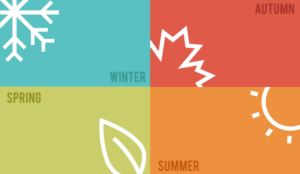Helen Billingham at Enghouse Interactive explores how to successfully scale the peaks of customer service demand.
Many sectors are much busier at particular times in the year. While Christmas is the biggest peak for industries such as retail, every organisation faces surges in demand that they need to meet.
For example, clearing for university places after A-level results are announced in August is the busiest time for higher education institutions, as we explain in this blog post.
While some peaks (like Christmas) are relatively easy to predict, the disruption from the pandemic has created new ones. For example, demand for food delivery services dramatically increased during lockdowns.
As we move to a more normal world there are likely to be new peaks in multiple industries that cannot yet be forecast.
So organisations need to be ready for planned and unplanned peaks, particularly when it comes to customer service. How can they prepare effectively and ensure they have the resources in place, while being able to right size operations when demand then declines?
Focusing on these five areas will help:
1. Increase Capacity via the Cloud
One of the key advantages of cloud contact centres is flexibility. That means you can scale capacity (such as the number of user licences) up or down quickly and easily, only paying for what you use.
There’s no danger that your infrastructure will fail due to the increased demand, meaning that customers receive a consistent, high-level experience whenever they make contact. It is even possible to scale capacity for particular days (such as Black Friday) or peak times of day.
2. Prepare Agents With the Right Knowledge
In the run-up to peak periods organisations bring in additional agents to answer queries. Getting these new starters up to speed quickly is vital to ensure they are productive as soon as possible and can deliver on customer needs effectively.
Therefore ensure that your contact centre solutions are easy to use to cut down training time, and support all agents with access to a constantly updated knowledge base. This means they will be able to provide fast, consistent answers without needing to call customers back or ask supervisors for help.
3. Plan Ahead if You Can
Some peaks in demand cannot be planned for, but many revolve around specific events that occur regularly, whether it is the Olympics or Christmas. In these cases it is vital to learn from previous years and use the insights to be ready.
That could mean strengthening self-service and chatbot options on your website to deflect routine queries away from the contact centre or making sure that web content is clear and understandable.
Customers want brands to value their time. They normally don’t want to have to pick up the phone to make contact, so provide a seamless experience that lets them focus on moving along the customer journey.
4. Be Agile
Even during peak seasons such as Christmas, there will be fluctuations in demand that are difficult to predict. For example, a competitor might launch a promotion or your logistics partner could have issues that lead to higher call volumes.
That means you need to be agile in how you respond, adding capacity quickly in response to these changes. Monitor your customer service interactions to see what consumers are saying and use this information to fine-tune your strategy.
For example, if everyone is asking about a particular product, update your website to display its availability clearly to everyone to prevent the need for them to call.
5. Join It Up
Customers have increasingly complex queries, which means that customer service teams need to collaborate with colleagues from other departments to solve them. Putting in place software such as Microsoft Teams makes this collaboration faster and easier.
For example, agents can ask subject experts questions in real-time via chat while they are speaking to customers, meaning they can provide answers without needing to call back. While this agility isn’t just needed for peak periods, greater demand at these times means that everyone across the organisation needs to be ready and available to collaborate to deliver for customers.
Peak periods can have an outsize impact on a company’s sales and brand reputation. Relying on the flexibility of the cloud is therefore vital, ensuring that customer service scales to meet demand.
This allows organisations to deliver the right levels of fast, consistent and helpful customer service to drive a successful peak for your business.
This blog post has been re-published by kind permission of Enghouse Interactive – View the Original Article
For more information about Enghouse Interactive - visit the Enghouse Interactive Website
Call Centre Helper is not responsible for the content of these guest blog posts. The opinions expressed in this article are those of the author, and do not necessarily reflect those of Call Centre Helper.
Author: Enghouse Interactive
Published On: 31st Aug 2021
Read more about - Guest Blogs, Enghouse Interactive






 Enghouse Interactive delivers technology and expertise to help bring your customers closer to your business through its wide range of customer contact solutions.
Enghouse Interactive delivers technology and expertise to help bring your customers closer to your business through its wide range of customer contact solutions. 








